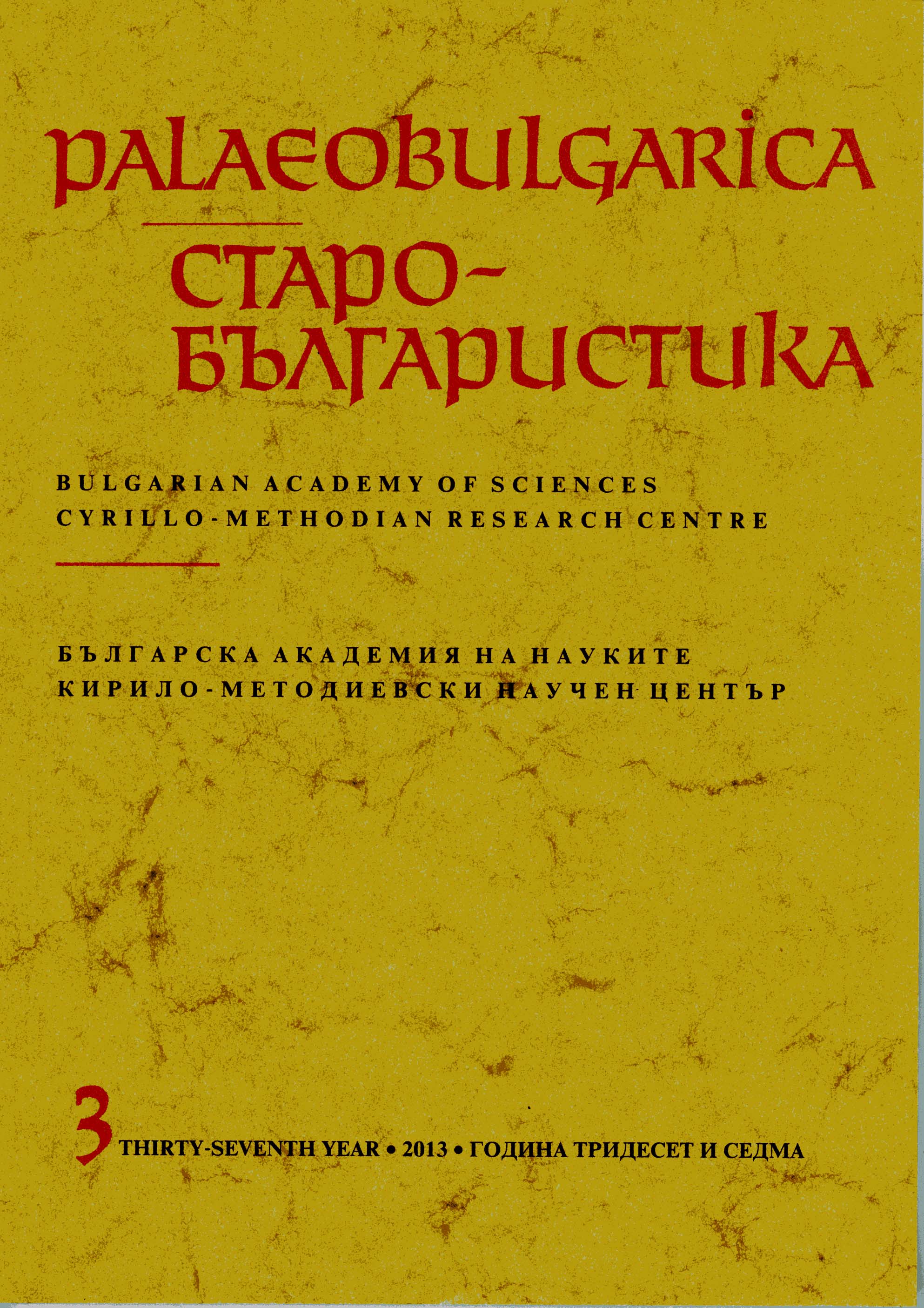Reassessing the Issue of Loanwords in Romanian Borrowed from Church Slavonic
Reassessing the Issue of Loanwords in Romanian Borrowed from Church Slavonic
Author(s): Cyril AslanovSubject(s): Language and Literature Studies
Published by: Кирило-Методиевски научен център при Българска академия на науките
Summary/Abstract: The most ancient Romanian translations of the Bible are quite recent. The first one goes back to the end of the sixteenth century (1582), when a translation of Genesis and Exodus was performed by Calvinists on the base of a Hungarian intermediary. More than one century later (1688), another translation was produced on the base of the Septuagint. Lastly, towards the end of the eighteenth century (1795), Greek-Catholic Romanians created an alternative version on the base of the Vulgata. In spite of the heterogeneity of sources (Hungarian; Greek; Latin) and nothwithstanding the diversity of the religious obediences (Calvinism; Orthodoxy and Uniatism), it seems that none of the translations managed to bypass the mediation constituted by the Slavonic translation of the Bible. To a certain extent, it seems that the real source language was Church Slavonic rather than Hungarian, Greek or Latin, as shown by the use of a huge amount of Slavonisms in all of the aforementioned translations of the Bible into Romanian.On the base of Exodus 15 I will try to compare the three versions under consideration as far as their indebtedness to Church Slavonic is concerned. However, some of the Slavonisms should be rather considered Slavisms because they do not necessarily rely on the mediation of Slavonic translations of the Scripture. They rather go back to the period of intense contact between Romanian and Middle Bulgarian. Unlike the Slavonisms that are paralleled in the translations of the Bible into Church Slavonic, those Slavisms appear as spontaneous borrowings and it is not sure that they were even perceived as such on a synchronic level due to their perfect integration within the system of the Romanian language.After a synopsis of the three aforementioned versions confronted with the Middle Bulgarian manuscript Barsov 3 edited by Veselka Zhelyazkova the article proceeds to a linguistic commentary of the three kinds of Slavonic borrowings : the text-mediated Slavonisms ; Slavonisms that seem to be text-mediated but without the intermediary of manuscript Barsov 3 ; the Slavonisms that seem to bypass the mediation of the Biblical text.
Journal: PALAEOBULGARICA / СТАРОБЪЛГАРИСТИКА
- Issue Year: 2013
- Issue No: 3
- Page Range: 11-24
- Page Count: 14
- Language: English
- Content File-PDF

